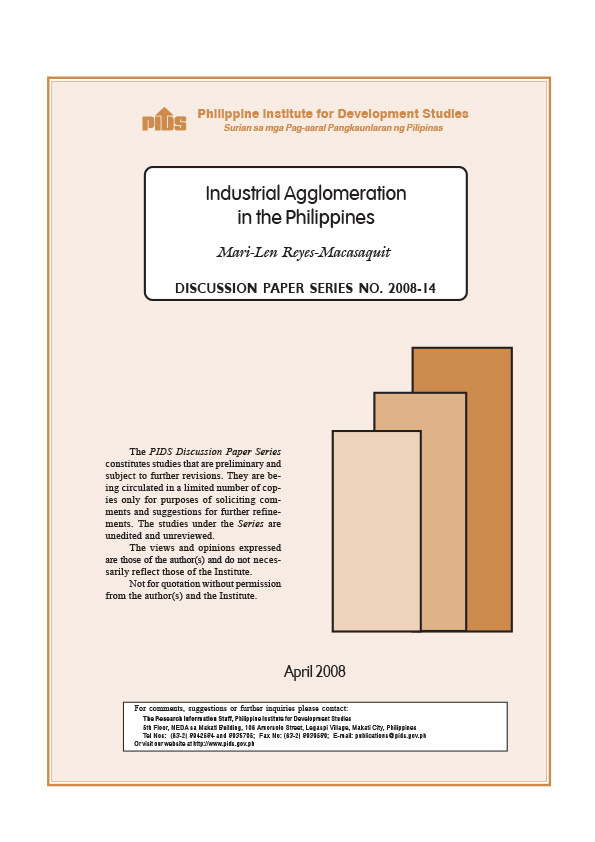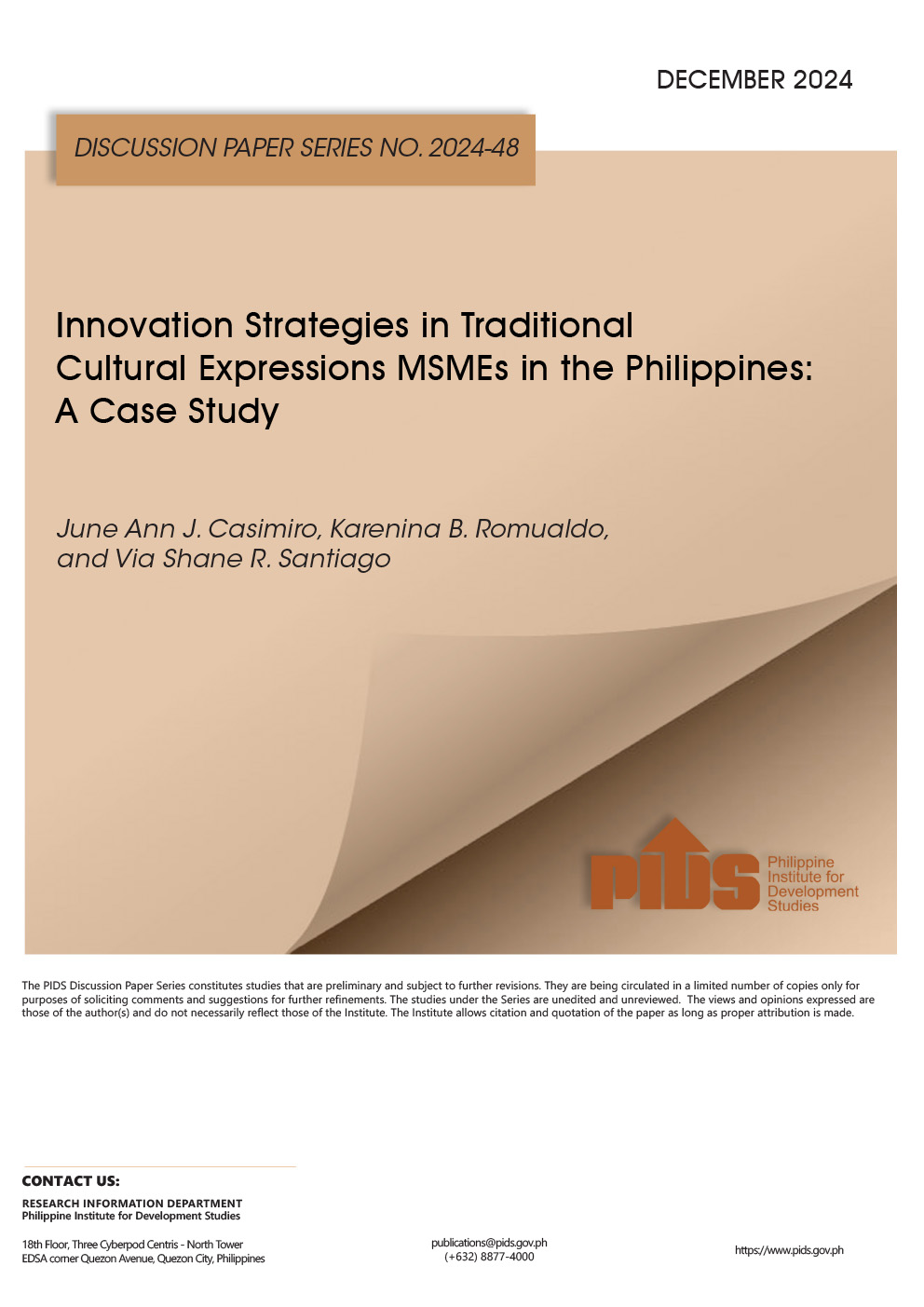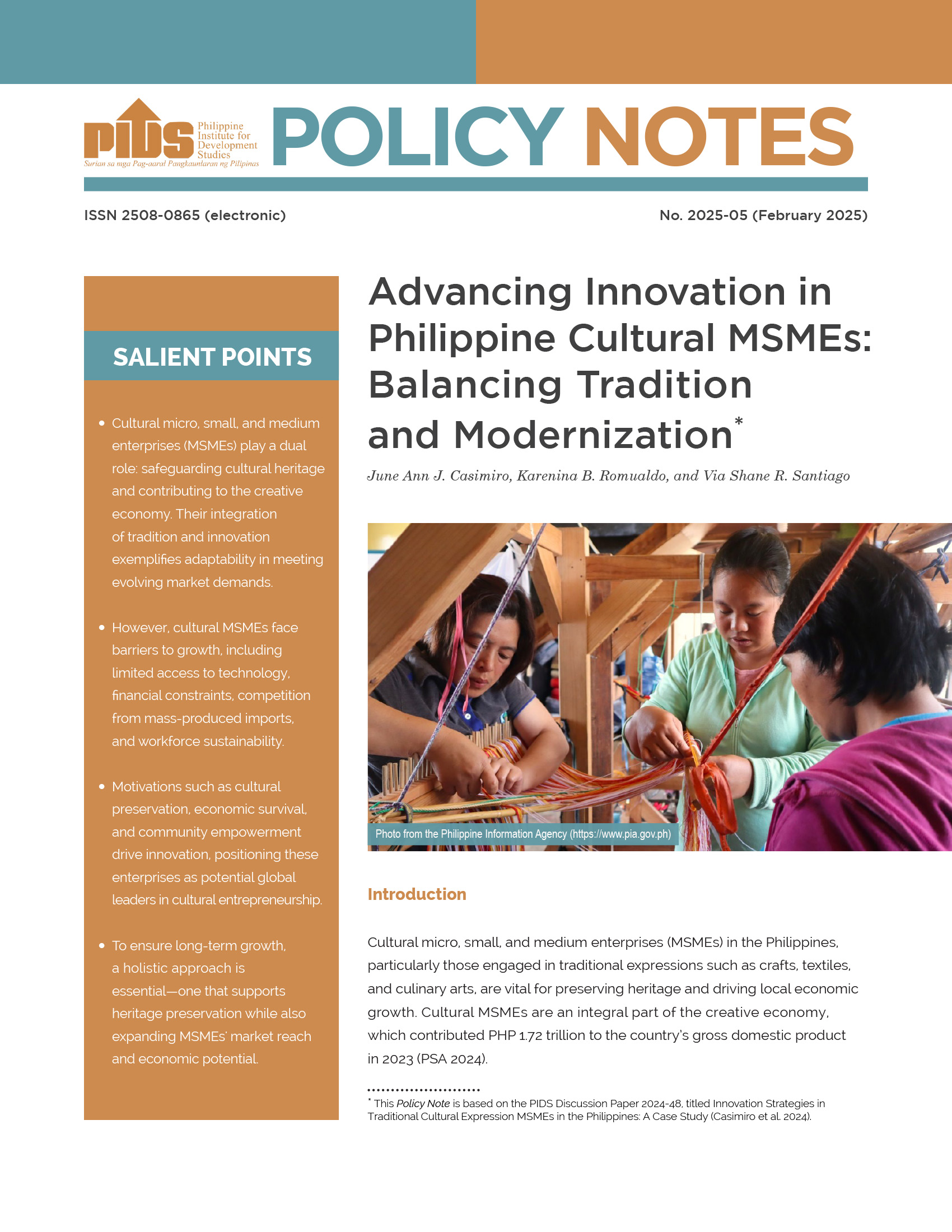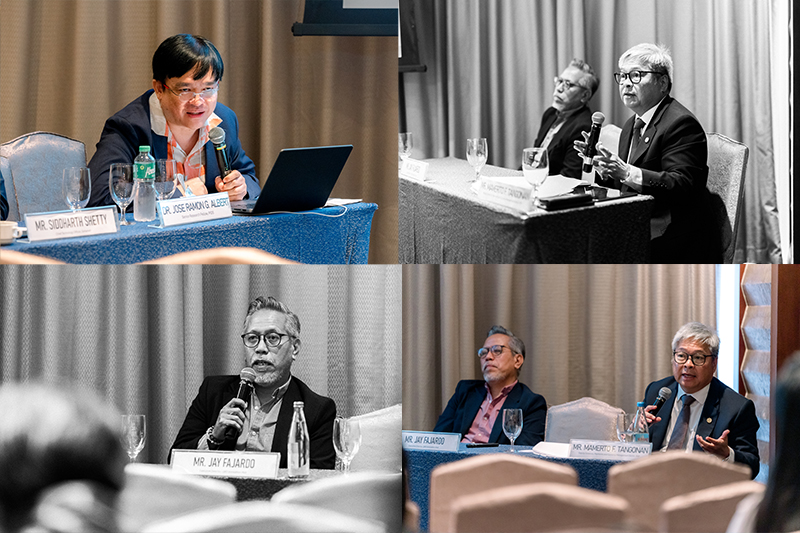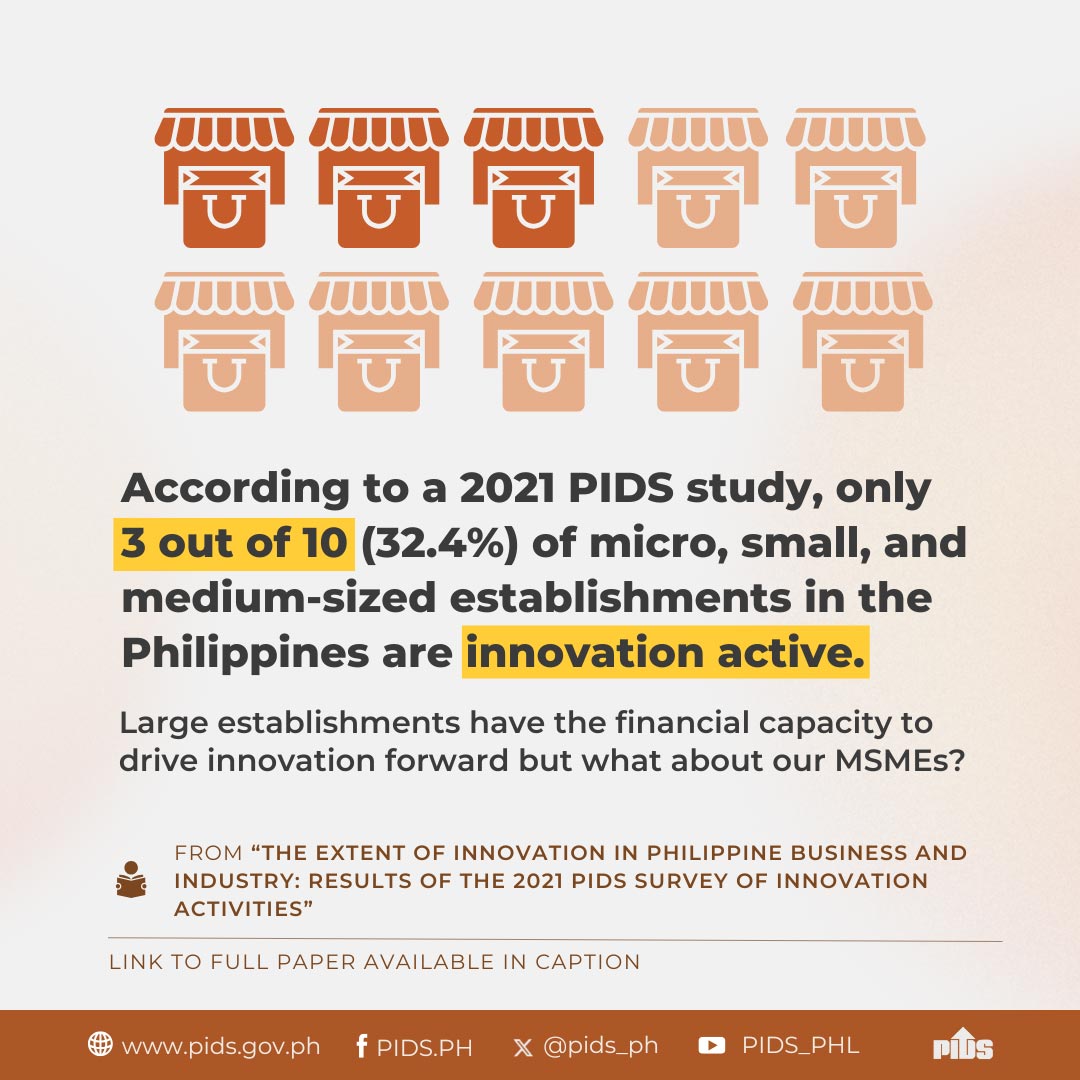The economic reform process in the Philippines was accelerated in the 1980s and 1990s. The reforms were found to have yielded positive results in terms of the nature of industrial agglomeration in the country as this was found to have occurred in the 1990s based on the results of the survey and econometrics analyses. The latter also identified the factors that influenced firms to agglomerate in the country, referring to economic fundamentals and deliberate policy and public action by government. However, industrial upgrading and innovation in the country was found to be weak. Expenditures on R&D are low and linkages between stakeholders are not strong. There are firms that have undergone upgrading in terms of introduction of new goods, upgrading of machineries, and opening of new markets but they tended to rely more on their in-house capabilities probably due to inadequate support from the government’s institutional infrastructure and financial system, which came out from the estimation results. The agglomeration strategies that are currently being pursued in the Philippines--establishment of economic zones and industry clustering--have the potential to address some of the issues and problems identified.

